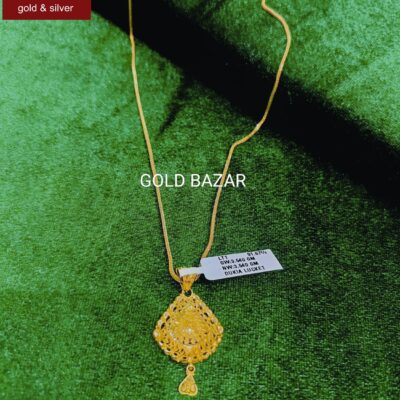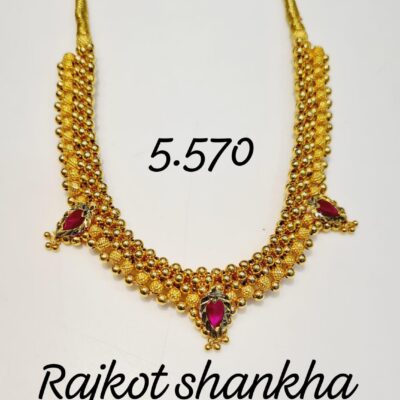Introduction
Building upon the foundational insights presented in The Evolution of Mythology in Modern Game Design, this article explores how mythological archetypes are reimagined as personalized digital identities—avatars—that embody cultural significance in contemporary gaming. As technology advances and cultural dialogues evolve, game designers and players alike are engaging in a dynamic reconstruction of myth, transforming ancient stories into meaningful expressions of identity. This process not only shapes individual experiences but also reflects broader societal values and cultural continuity.
- Reimagining Mythical Archetypes as Personal Avatars in Gaming
- Cultural Significance of Myth-to-Avatar Transformation
- The Role of Mythology in Fostering Player Agency and Narrative
- From Myth to Digital Persona: Ethical and Cultural Considerations
- The Evolution of Visual and Interactive Representations of Mythic Identity
- Interplay Between Myth, Avatar, and Player Identity Construction
- Connecting Mythological Evolution to Modern Cultural Expression
1. Reimagining Mythical Archetypes as Personal Avatars in Gaming
a. How do players transform mythological archetypes into personalized digital identities?
Players often use avatar customization tools to embody mythic figures, selecting visual elements, powers, and narratives that resonate with their personal or cultural identities. For example, in SMITE, players choose gods from diverse mythologies—such as Anubis from Egyptian myth or Odin from Norse legend—and adapt these archetypes to reflect their unique gaming style and identity. This personalization process allows players to forge a tangible connection with mythic symbols, transforming passive stories into active, self-expressive digital personas.
b. What psychological and cultural factors influence avatar customization based on mythic figures?
Research indicates that identification with mythic archetypes in avatars fulfills psychological needs for agency, mastery, and belonging. Culturally, players often select mythic symbols that affirm their heritage or challenge dominant narratives. For example, Indigenous players might incorporate ancestral symbols into their avatars, asserting cultural pride and continuity. Conversely, Western players may adopt mythic elements to explore themes of heroism or transcendence, illustrating how mythic customization serves as a bridge between individual psychology and cultural expression.
c. Examples of games that emphasize avatar creation rooted in mythic symbolism
- Black Desert Online: Extensive character creator allowing players to craft mythologically inspired avatars with detailed features and costumes.
- God of War: Incorporates Norse and Greek mythic figures, enabling players to embody gods and heroes with narrative significance.
- SMITE: A MOBA where players select deities from various mythologies, customizing their appearance and abilities.
2. Cultural Significance of Myth-to-Avatar Transformation
a. How does the adaptation of mythological figures into avatars reflect contemporary cultural identities?
Transforming mythological figures into avatars enables players to express their cultural heritage within a globalized digital space. For instance, Asian players might incorporate Confucian or Shinto symbols into their avatars, fostering a sense of cultural pride. This adaptation also facilitates cross-cultural dialogue, as mythic symbols become shared references that highlight diversity and commonality. Such representations often serve as modern narratives that keep ancient stories alive, reinterpreted through personal and collective lenses.
b. In what ways do avatars serve as representations of players’ heritage and societal values?
Avatars embody societal values by highlighting virtues like bravery, wisdom, or resilience associated with mythic figures. An example is the use of African spiritual symbols in avatars, which underscores themes of community and ancestral reverence. Furthermore, players may choose mythic identities that challenge stereotypes or promote social justice, turning digital personas into platforms for cultural activism and identity assertion.
c. The impact of cultural authenticity versus commercialized mythic symbols in avatar design
Authentic cultural representations foster respect and preserve traditions, but commercial influences often lead to superficial or stereotypical portrayals. For instance, some games commercialize Egyptian mythology by reducing deities to cosmetic skins, risking cultural misappropriation. Developers increasingly recognize the importance of authentic consultation and collaboration with cultural experts to create respectful and meaningful myth-based avatars, thus balancing commercial appeal with cultural integrity.
3. The Role of Mythology in Fostering Player Agency and Narrative
a. How do myth-inspired avatars enhance player agency within game narratives?
Myth-inspired avatars empower players by allowing them to shape their character’s journey within mythic frameworks. For example, in Hades, players choose mythic heroes to explore their stories, making decisions that influence divine politics and personal destiny. This interactive engagement elevates the sense of agency, as players actively interpret and modify mythic narratives through their choices.
b. Can myth-based avatars facilitate deeper emotional engagement and identity exploration?
Yes, myth-based avatars serve as mirrors for players’ inner worlds, enabling emotional connections and self-reflection. Players might embody a hero struggling with moral dilemmas, paralleling personal experiences. The symbolic weight of mythic figures fosters empathy and understanding, turning gameplay into a process of identity exploration and emotional growth.
c. The influence of mythic storytelling on player immersion and character development
Mythic storytelling enriches immersion by providing archetypal themes that resonate universally, such as heroism or redemption. Games like God of War use mythic narratives to deepen character development, allowing players to traverse complex emotional landscapes rooted in mythic conflicts, thus creating a compelling sense of participation in a timeless story.
4. From Myth to Digital Persona: Ethical and Cultural Considerations
a. What are potential issues surrounding cultural appropriation in myth-inspired avatars?
Cultural appropriation arises when developers or players adopt mythic symbols without understanding or respecting their origins, risking misrepresentation or trivialization. For example, using sacred Native American symbols as mere aesthetic features can perpetuate stereotypes and disrespect cultural significance. Ethical practices require cultural consultation and sensitivity to ensure avatars honor their origins.
b. How can game developers balance respect for cultural origins with innovative design?
Achieving this balance involves collaborating with cultural experts, conducting thorough research, and engaging in inclusive design processes. For instance, Ubisoft’s Assassin’s Creed series incorporates authentic cultural elements through partnerships with local historians and artists, ensuring respectful and innovative representations that educate and celebrate diversity.
c. The importance of inclusivity and representation in mythologically inspired gaming content
Inclusive representation broadens cultural narratives, allowing marginalized groups to see themselves reflected in gaming worlds. It also fosters mutual understanding and respect. Initiatives like the inclusion of African mythologies or indigenous stories highlight the importance of diverse mythic voices, enriching the cultural tapestry of digital storytelling.
5. The Evolution of Visual and Interactive Representations of Mythic Identity
a. How have advances in graphics and interactivity transformed myth-based avatars over time?
From pixelated representations to photorealistic models, technological progress has enabled detailed and culturally rich mythic avatars. Games like Ryse: Son of Rome showcase high-fidelity recreations of mythic warriors, enhancing immersion and authenticity. Interactivity improvements—such as dynamic facial expressions and responsive animations—allow players to forge deeper emotional bonds with their mythic personas.
b. What emerging technologies (e.g., VR, AR) mean for the future of myth-inspired cultural identity?
VR and AR promise immersive experiences where players can step into mythic worlds or wear mythic symbols as part of their real-world environment. For instance, AR apps that overlay Egyptian hieroglyphs or Norse runes in physical space can deepen cultural engagement and education. These technologies will likely democratize access to mythic storytelling, fostering personal and collective cultural identities in unprecedented ways.
c. Comparing traditional mythological art forms with modern digital representations
| Traditional Mythological Art | Modern Digital Representations |
|---|---|
| Ancient sculptures, frescoes, and carvings | 3D models, VR environments, and interactive avatars |
| Limited by material and scale | Unlimited interactivity and customization |
| Cultural symbols often symbolic and static | Dynamic, responsive, and personalized |
6. Interplay Between Myth, Avatar, and Player Identity Construction
a. How do players negotiate their real-world identity through mythic avatars?
Players often experiment with mythic avatars to explore facets of their identity that may be suppressed or underrepresented in real life. For example, embodying a powerful deity can symbolize aspirations for strength or wisdom. This process allows individuals to negotiate and reconcile different aspects of their selves within a safe, imaginative space.
b. In what ways do avatars based on myth influence players’ self-perception and social interactions?
Mythic avatars can bolster self-confidence, grant social status, or foster group cohesion. Sharing mythic symbols promotes a sense of belonging within communities, especially when collective narratives emerge around shared mythic identities. Conversely, misappropriation or superficial representations can lead to misunderstandings or alienation.
c. The role of community and shared mythic symbols in shaping collective gaming identity
Communities centered around mythic themes often develop shared symbols and narratives that strengthen collective identity. For instance, fan groups celebrating mythological lore—such as Norse or Egyptian—foster bonds through storytelling, cosplay, and collaborative gameplay, illustrating how mythic symbols serve as cultural glue in digital spaces.
7. Connecting Mythological Evolution to Modern Cultural Expression
a. How does the transformation from myth to avatar reflect the broader evolution of myth in contemporary media?
This transformation signifies a shift from static storytelling to active participation, where myths are no longer just stories told passively but dynamic elements integrated into personal and cultural identities. Films, games, and virtual environments recontextualize myth, making it accessible and adaptable to contemporary audiences while preserving core themes.
b. What insights can be gained about cultural continuity and change through this digital adaptation?
Digital adaptation reveals that myth remains vital, serving as a vessel for cultural values and collective memory. It also demonstrates how cultures adapt mythic symbols to reflect current societal issues, such as gender roles or environmental concerns, ensuring myth’s relevance across generations.
c. Future directions: from mythological storytelling to personalized cultural narratives in gaming
The future will likely see an increasing emphasis on personalized mythic narratives, facilitated by AI-driven story generation and immersive technologies. Players may craft their own mythic stories, blending personal history with cultural symbols, thus fostering a new form of digital cultural continuity that is both deeply individual and universally connected.
Information
Hottest Deals
-
Sale Product on sale
 Gem Gold Mens Ring
Gem Gold Mens Ring₹1,500.00Original price was: ₹1,500.00.₹1,300.00Current price is: ₹1,300.00. -
Sale Product on sale
 Xyz
Xyz₹555.00Original price was: ₹555.00.₹444.00Current price is: ₹444.00. -
Sale Product on sale
 Gold Mangalsutra
Gold Mangalsutra₹850.00Original price was: ₹850.00.₹750.00Current price is: ₹750.00.




